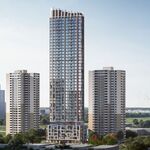what American cities have actually demolished a really busy freeway? none so far.
Rochester demolished their ring road which went nowhere.. San Fransisco demolished the Embarcadero freeway which was similarly a stub (similar to the part of the Gardiner east of the Don which was demolished in the early 2000's)... where else? Seattle demolished their waterfront freeway only after replacing it with a Tunnel.
The *only* "major" freeway demolition in the US I'm aware of is I81 in Syracuse, and even that isn't a particularly busy or critical highway connection being a small 4-lane elevated highway for which the majority of traffic can detour to the City's ring road with minimal time penalties.
The Park East freeway in Milwakee was removed.
The Harbor Drive freeway in Portland, Ore. was removed.
The Innerbelt freeway in Akron, Ohio was removed.
The Sheridan Expressway in the Bronx was removed.
The Oak Street Connector in New Haven was removed.
The West Sacramento Freeway was removed in Sacramento
The West Side Elevated Highway was removed in Manhattan
And there are a few more.......
***
The proposed list is substantial too.
The Clairborne Expressway in New Orleans
Interstate 345 in Dallas
Interstate 35 in Deluth
Interstate 375 in Detroit
Interstate 475 in Flint, Mi
Whitehurst Freeway in Washington DC
The Skyway in Buffalo, NY
Scajaquada Expressway in Buffalo, NY
****
Note that I did not include any proposals that included tunnels or a re-routed highway, only demolition/conversion to boulevard.




